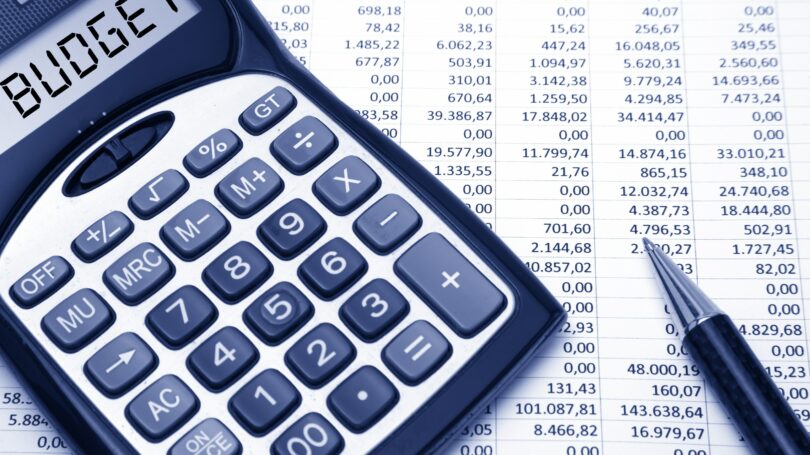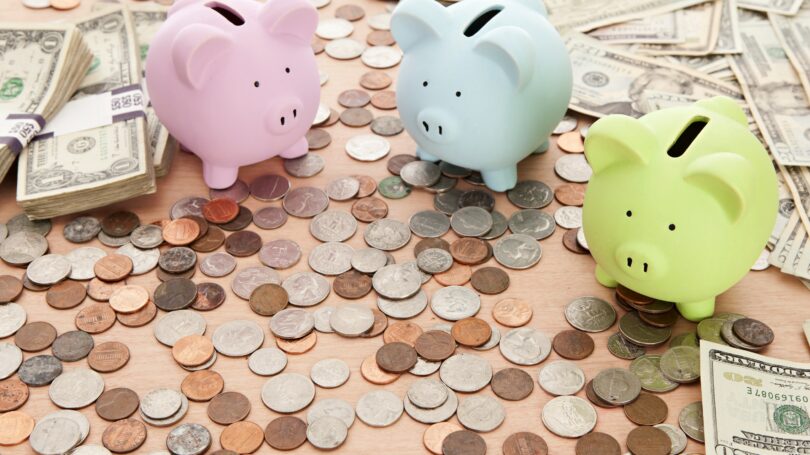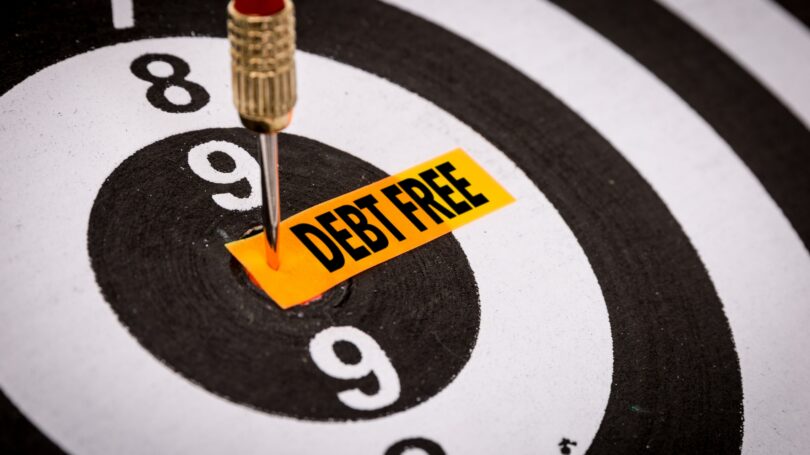Most of us could do with a little more money at the end of the month. Unfortunately, it’s hard to figure out how to squeeze savings out of a tight budget. If you read finance articles online, you hear about all kinds of saving strategies, from packing your own lunch to freezing all spending for a month. But how can you tell which ones really work?
Now there’s an answer to that question. In 2016, Claris Finance polled 2,000 Americans about their best and worst financial decisions. One of the questions Claris asked people was what strategies they had tried to save money – and which ones actually helped them.
The poll respondents named five top saving strategies that worked for them. Here’s the list – with some advice on how to make them work for you too.
1. Make a Budget

A budget is like a diet for your money. You make one by figuring out just how much you make each month. Then, based on that figure, you work out how much you can afford to spend on different things – housing, food, transportation, and so on. Once you know what you can afford to spend in each category, you try to stick to those limits every month.
How Well It Works
Making a budget was by far the most popular saving strategy in the Claris poll – and the most effective one too. Roughly 44% of the people who took the poll said they had used a budget to save money, and 42% said it helped them. That means that of all the people who tried budgeting, more than 95% found it useful.
But even though the poll shows that budgeting works, most Americans don’t do it. A 2013 Gallup poll shows that less than one in three Americans has a detailed household budget.
How to Do It
Perhaps the reason so few people actually budget is that they just don’t know how to start. But, making a budget isn’t all that hard. The basic process looks like this:
- Figure Out How Much Money You Take Home Every Month. For most workers, this amount is the same, or nearly the same, from one month to the next.
- Figure Out What You Spend Each Month. Some expenses, like rent, are the same every month. Others, like groceries, vary from one month to the next. For those categories, you can take an average to figure out how much to budget each month. If you have debts, don’t forget to include the payments as a budget item.
- Set Aside Money for Occasional Expenses. Some expenses, like doctor visits or auto repairs, only come up once in a while. Figure out how much you need to spend on these every year, and divide the cost by 12. That way you can set aside money every month to cover these costs when they pop up.
- Find a Way to Keep Track. You can write down your expenses each month the old-fashioned way, with a paper and pencil. However, modern tools such as spreadsheets make it easier. You can also use free apps like Mint or Mvelopes, or paid apps like You Need a Budget (YNAB) or Tiller, to track your spending automatically.
- Adjust Your Plan as Needed. There’s a good chance you won’t get all your budget numbers right the very first month. As you track your spending, you can shift dollars from the categories where you tend to run over budget to other areas where you stay under. Over time, you can work your way toward a budget that fits your needs.
If you’ve already made a budget, but you have trouble sticking to it, maybe all you need is a different method. Envelope budgeting works for many people because it physically sets aside the amount of cash you can use for each budget category. There’s no way to overspend because once the money’s gone, it’s gone.
If your problem is that your income varies from month to month, zero-based budgeting could be the right approach for you. With this system, you base your spending on how much you made last month – not how much you stand to make this month. This way, there’s no risk of falling short if your income turns out to be less than you expected.
2. Eat Out Less

It’s no secret that eating out at restaurants is pricey. According to Gourmet Marketing, the ingredients in a restaurant meal only account for 32% of the cost. So if you cooked the same meal yourself at home, it would only cost one-third as much.
Even small dining expenses, like a daily cup of coffee, can add up. That coffee may only cost $2, but if you buy one every day for a year, that’s over $700 worth of java. So if you eat out often, cutting back can free up a big chunk of cash in your budget.
How Well It Works
In the Claris survey, 43% of respondents said they’d cut back on eating out, and 33% said they saved money as a result. So more than three out of four people who tried this strategy said it worked for them. That’s not quite as impressive as the 95% who were helped by a budget, but it’s still pretty good.
How to Do It
If you eat out all the time because you just don’t know how to cook for yourself, don’t worry – it’s easy to learn. There are tons of resources out there for novice cooks, including TV shows, cookbooks, magazines, and free recipes online. Just pick a few simple recipes to start with, buy the ingredients, and get cooking.
Remember, too, that cooking at home doesn’t have to mean cooking from scratch. There’s nothing wrong with buying chicken broth in a can or pasta sauce in a jar. Even with these prepared ingredients, a home-cooked meal is still a lot cheaper than one from a restaurant.
If you don’t cook at home because your schedule is too busy, consider investing in a slow cooker. With this kitchen tool, you can take five minutes to get dinner started before you leave for work and have a hot meal waiting when you come home. You can also try microwave-based recipes that cut down on cooking time.
Finally, if the problem is that you just love the food at a particular eatery, you can learn to fix your own versions of your restaurant favorites at home. Just search the Web and you’ll find “copycat” versions of lots of well-known dishes, like the blooming onion from Outback Steakhouse and the Zuppa Toscana from Olive Garden.
You can also learn to make you own gourmet coffees instead of spending $3 a pop at Starbucks. Being able to treat yourself to your favorite dishes right in your kitchen can help you save money without feeling deprived.
3. Save Your Loose Change

A change jar is a simple way to trick yourself into saving money. All you have to do is take all the coins out of your pockets at the end of each day and drop them into a jar. The idea is that these odd bits of change are such small amounts that you won’t miss them. Over time, though, those tiny amounts add up to much bigger sums, which you can stash away in the bank.
How Well It Works
People in the Claris survey had mixed results with this approach. Out of all the people in the survey, 32% tried it and 17% – a little over half – found it helpful. It probably works better for people who make more purchases in cash, so they end up with more change in their pockets.
How to Do It
The nice thing about this saving strategy is that it’s incredibly easy to do. All you need is a jar and a place to put it. If you like, you can label the jar with a tag like “Bermuda vacation fund” to remind you what you’re saving for. Then as you watch the jar filling up, you can picture yourself getting closer to your goal.
When your jar is full, you can take your savings to the bank. Most banks require you to count and wrap the coins before depositing them, but they usually provide the wrappers free of charge. If your coin jar funds are earmarked for a special purpose, such as a vacation, you can open a separate account at the bank just for that.
If you prefer to pay with your debit card when you shop, there’s another way to save your change. Programs at some banks, such as Bank of America’s Keep the Change and Wachovia’s Way2Save, let you round up all your purchases to the nearest dollar. The change goes into your account automatically, with no coins to count.
4. Stay Out of Debt

Debt can be a major budget-buster. In 2016, families with credit card debt spent an average of $1,300 per year on interest. So if you have debt of any kind, paying it off can free up a huge chunk of change in your budget. And if you’re debt free right now, staying that way can save you big bucks down the road.
How Well It Works
The statistics on avoiding debt are surprising. Only 22% of the people in the Claris poll said they had tried this approach, yet 26% say it worked for them. That means that some people saved money with this method, even though they weren’t using it!
How is that possible? Most likely, what these people mean is that they weren’t trying to avoid debt – it just happened. Then, looking back on it later, they realized that staying debt free had made it much easier for them to save.
How to Do It
Staying out of debt can save you a lot of money, but for most people, it’s not easy to do. A 2015 Pew report shows that over 80% of all Americans have some debt. Here are the four most common types of debt and some ways to avoid them – or pay them off if you already owe them.
Mortgages
A mortgage is the most common form of debt in America. Over 44% of Americans have one, and the average amount they owe is over $100,000.
However, mortgages are also less dangerous than many other types of debt. The interest on them is generally low, and it’s usually paid off in fixed monthly installments. Also, homeowners get a tax break on the mortgage interest they pay.
Finally, taking on mortgage debt can pay off in the long run because the asset you gain from it – your home – usually grows in value over time. And even if it doesn’t, buying a home can cost less over a lifetime than paying rent every month. You usually pay more each month while you have the mortgage, but once it’s paid off, you can live rent free for the rest of your life. So if you can’t afford to buy a house with cash, taking out a mortgage can be a sound financial move.
However, that’s no reason to take on more mortgage debt than you have to. So as you compare the costs of renting versus buying, set a firm budget and avoid buying more house than you can afford. Also, make the biggest down payment you can manage so you don’t have to borrow as much. That will keep your monthly payments low and help you avoid the added cost of private mortgage insurance.
You can also take steps to pay off your mortgage early. For instance, you can add a little extra to each mortgage payment or make extra lump-sum payments toward your principal. You can also pay faster with smaller biweekly payments instead of one large monthly payment. Refinancing your mortgage can reduce the interest, making these extra payments easier to manage.
Credit Card Debt
Credit card debt is the second most common type. Nearly 40% of Americans owe money on their credit cards, with an average balance of $3,800. Credit card debt is far more harmful than mortgage debt because the interest rates are much higher. The average annual interest rate on a credit card is over 16%, compared to only 4.3% for a mortgage.
Fortunately, credit card debt is also one of the easiest types of debt to avoid. It’s a simple matter of never charging more on your card than you can afford to pay off at the end of the month. If you don’t have the discipline to control your spending with credit cards, make your purchases with cash or debit cards instead. That way, you can’t possibly spend more than you have.
If you already have credit card debt, there are several ways to pay it off. By pinching pennies, you can free up extra cash to add to your monthly payment. If you can’t set aside a fixed amount every month, you can use debt snowflaking, putting whatever small sums you can find toward the credit card balance. Over time, those small amounts can add up to a much faster payoff.
You can pay off your balance faster if you transfer your balance to a different card with a lower interest rate. That way, you can devote more of each monthly payment to paying down the principal and less to interest. You can also roll over your credit card balance into a debt consolidation loan with lower interest.
Car Loans
Car loans aren’t quite as common as credit card debt. More than a third of all Americans owe money on a car loan, according to the Pew report. Car debt is typically higher than credit card debt, averaging around $13,000. On the other hand, the interest on car loans is lower – around 4.3% on average, according to Bankrate.
Still, there’s no point in paying even a low-interest rate if you don’t need to. A car costs a lot less than a house, so paying cash for your car is a reasonable option for a lot more people. It’s even easier if you buy a used car instead of a new one. Cars.com reports that you can buy a roomy 3- or 4-year-old car with plenty of features for less than half the price of a brand-new econobox.
If you already owe money on a car, you can pay off your car loan early with the same strategies you’d use to pay off a mortgage. You can round up your monthly payment, make extra payments, or pay biweekly instead of monthly. These strategies will cut down the interest you pay and get you out of debt sooner.
Student Loans
Student loans are less common than other types of debt, but they’re on the rise. Overall, about 21% of Americans have student loans, with an average balance of $20,000. However, the younger people are, the more likely they are to have this kind of debt. The Institute for College Access and Success says 68% of all college graduates in 2015 left school with debt, and the average amount they owed was over $30,000.
Getting a college education while avoiding student loan debt is hard, but there are ways to do it. If you’re a good enough student, you can qualify for merit-based scholarships that cover some or all of your tuition costs. You can also apply for need-based financial aid in the form of grants, rather than loans. And if you take Advanced Placement (AP) courses in high school, you can earn college credits so you don’t need to pay for a full four years.
If you can’t get aid to pay for college, try choosing a less expensive school. State universities charge less than private colleges, and community colleges are cheaper still. You can go to a community college for two years and then transfer to a private or state school to get your degree.
There are even a few colleges that are completely free of charge. However, they’re not easy to get into, and you must either work your way through or perform service after you graduate. Some of these schools include Barclay College in Kansas, Berea in Kentucky, and all the military service academies.
There are several student loan repayment programs out there for people who serve the public in some way. This includes teachers, military service members, and healthcare workers. It’s also possible to have student loan debt forgiven if you become disabled. However, in this case, you would have to pay tax on the canceled debt.
5. Live Like a Minimalist

Minimalism is a form of voluntary simplicity. It means stripping your life down to the basics so you can focus on what matters most to you. A minimalist life typically means a smaller house, fewer clothes, and fewer “toys” like fancy electronics. But it also means less work and more free time for the things you enjoy.
How Well It Works
This is another saving strategy that worked even for people who didn’t mean to use it. Only 16% of the people in the Claris survey say they set out to live a minimalist lifestyle. Yet 18% of the respondents say living this way helped them save money.
In this case, the minimalist life could have been a by-product of other ways to save. Most likely, some people scaled back their lifestyle as part of their efforts to live on a budget. Then, over time, they realized that their simpler lifestyles were helping them save more.
How to Do It
There are a lot of misconceptions about what minimalism means. The blog The Minimalists jokes that many people think all minimalists live in tiny apartments in exotic places with no job, no car, no TV, no family, and no more than 100 objects. The truth is that you can be a minimalist this way, but you don’t have to.
The real point of minimalism is to free yourself from the things in life that don’t matter to you. It’s not about sacrifice. It’s about clearing away the things you don’t want in your life to make more room for the things you care about. So living with less stuff can actually make you more fulfilled.
The great thing about living a simpler life is that there’s no right or wrong way to do it. You can be a minimalist by living in an off-the-grid cabin and growing your own food. Or you can live in an urban loft, walk to work every day, and take part in street performances. It’s all about focusing less on the things you own and more on what you do with your life.
If you’re still not sure you can handle this kind of life, try starting small. Find just a few things in your life that you don’t need or want. For instance, if your wardrobe is overstuffed, set a goal to get rid of some clothes. Or if you think you spend too much time online, set a goal to cut down your screen time.
Whatever you do, don’t try to simplify your life by giving up things you truly love. Instead, pick the things that require the most work for the least reward. Get rid of those, and see how you that makes you feel. Don’t be surprised if you find that you’re enjoying your life more with less stuff – and saving money at the same time.
Final Word
If you’re looking for ways to save more money, these strategies are a good place to start. You already know that they’ve worked for other people, so there’s a good chance they can work for you too. However, you don’t need to jump in with both feet and try all of the strategies at once. Instead, figure out which ones will work for you.
For instance, if eating out is one of your greatest joys in life, cutting back on restaurant meals probably won’t work. You’ll just get frustrated and give up within a few weeks. Instead, keep your restaurant budget and look for something else to scale back.
Likewise, avoiding debt is a good idea in general. However, if your biggest goal in life is to own a house, you shouldn’t give up on that dream just to avoid mortgage debt. Instead, look for a house you can easily afford the payments on.
If you’re not sure which saving strategy to try, making a budget is probably your best bet. The great thing about budgets is that you can adjust them to fit your needs and goals. You can budget to spend less on your car so you can afford a better house – or the other way around. It’s all about putting your dollars where they matter the most.
For more help, check out our 25 Easy Ways to Save Money on a Tight Budget Today.
Which of these saving strategies have you tried? How well did they work for you?